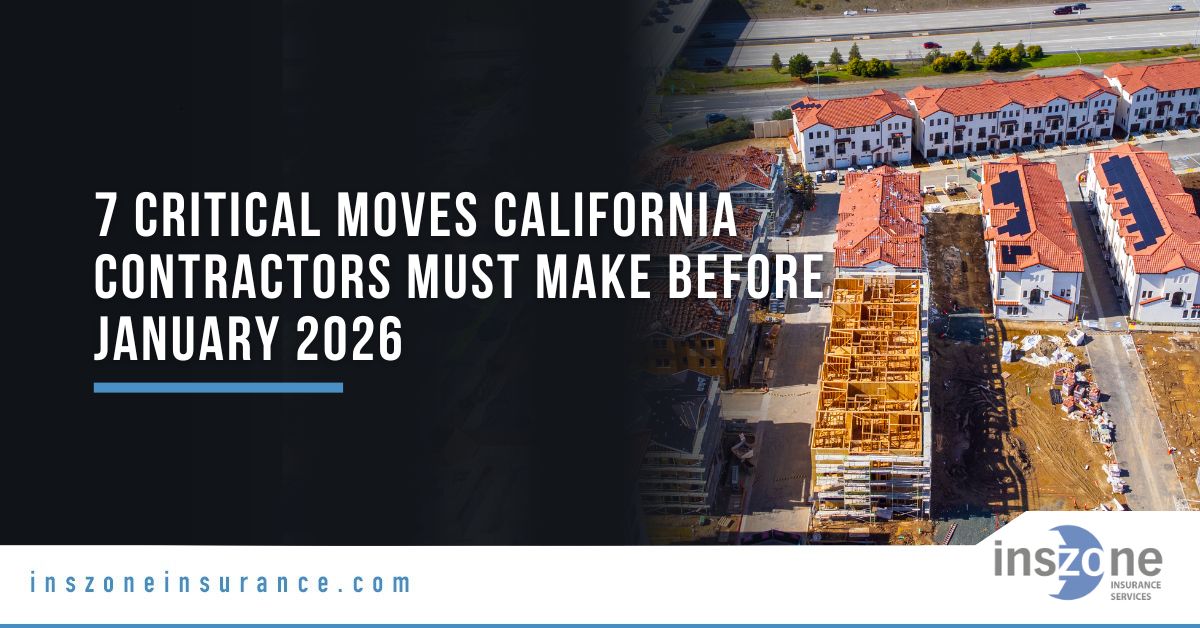California’s workers’-comp rules are tightening fast, and January 1, 2026 is a pivotal checkpoint—despite a later 2028 universal mandate. Think of 2026 as the year the Contractors State License Board (CSLB) begins stress-testing every license for valid coverage (or a bullet-proof exemption). Miss these cues and you risk stalled renewals, project delays, or outright suspension.
1. Know the Two Laws Driving the Change
- Senate Bill 216 (2022) set the original all-contractor requirement for 1/1/26.
- Senate Bill 1455 (2024) postponed the universal date to 1/1/28 so CSLB could build a tougher exemption-verification system.
Take-away: 2026 isn’t “cancelled”—it’s the on-ramp to full enforcement.
2. Check Whether You’re Already Mandatory
If you hold any of these licenses, workers’ comp has been required—employee or not—since 2023:
- C-8 Concrete
- C-20 HVAC
- C-22 Asbestos Abatement
- D-49 Tree Service
- C-39 Roofing (long-standing rule)
3. Map Your 2026 License-Renewal Window
CSLB signals it will refuse renewals that lack a valid policy (or filed exemption) during the 2026 cycle, even for trades not yet on the mandatory list. Expect heightened paperwork reviews, random audits, and faster penalty triggers.
4. Budget for a “Ghost” Policy—Even at $0 Payroll
Insurers sell low-premium “ghost” workers’-comp policies for sole proprietors with no employees. They satisfy CSLB, protect you if you hire day labor, and make bidding easier. Many contractors overlook this option until an owner demands a certificate.
5. Tighten Any “No-Employees” Claim Now
SB 1455 orders CSLB to roll out a new verification process by Jan 1 2027. Expect sworn statements, random site visits, or payroll audits. If you occasionally bring helpers onto the job, a policy is the safer path.
6. Sync Your Insurance Certificate with CSLB—Automatically
Most carriers can e-file Form 7125 directly to CSLB, but only if you provide the correct license number and classification codes. Double-check that your certificate shows:
- The exact business name on your license
- Every active classification you hold
- Current policy start and end dates
Missing or mismatched data triggers automatic suspension.
7. Keep Clients in the Loop
Homeowners and general contractors now see your insurance status in the CSLB public lookup. An outdated exemption or lapsed policy can kill deals overnight. Make “proof of comp” part of every bid packet to stay competitive.
Your 2026 Action Plan at a Glance
| Timing | To-Do |
|---|---|
| Now | If you’re in a covered trade, keep a valid policy on file with CSLB. |
| 2025–2026 | If you still claim “no employees,” document it and budget for premiums. |
| By 12/31/2025 | Shop the market, pick a policy, and file it well before your 2026 renewal. |
| Ongoing | Update CSLB within 90 days of any policy change or cancellation. |
Why Acting in 2025 Matters
Worker protection – Ensures medical care and wage replacement.
Legal shield – Limits lawsuits against you personally.
Bid eligibility – Many owners now reject uninsured bids.
Peace of mind – Avoid license suspension when real enforcement ramps up.





